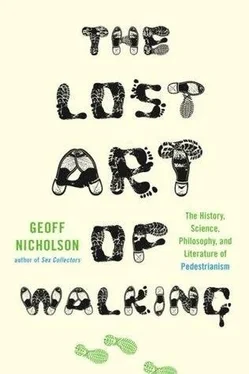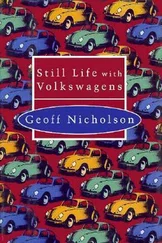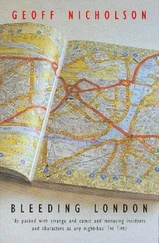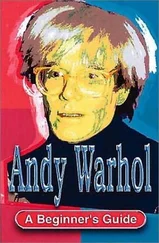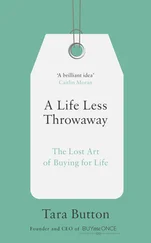According to legend, Keaton, while a child actor, was performing onstage and was required to walk down a flight of stairs, but he tripped and fell all the way to the bottom, then immediately got up, walked across the stage, and carried on as though it had never happened. Harry Houdini was supposedly in the audience and is credited as having said something along the lines of ‘Ain’t he the little buster’, but surely this is apocryphal.
It appears that Keaton may also have got something from the cartoon character Felix the Cat. According to Mark Newgarden, an illustrator and animator, who got it straight from the mouth of Otto Messmer, Felix’s creator, there was a time in the 1920 swhen Keaton paid the producer of the Felix cartoons (Pat Sullivan) so that he could use an approximation of Felix’s walk: a backward-and-forward pace, head down, arms clenched behind the back. Newgarden, as do I, finds it amazing that Keaton thought he needed to make such a payment. What court would ever have found Keaton guilty of stealing a walk from a cartoon character? Still, these were Keaton’s golden years — perhaps he had enough money that he thought it was a good investment to spend a little then and head off legal trouble later.
Like Felix, Keaton kept on walking, through TV specials, commercials, industrial training films, and even, in 1965, How to Stuff a Wild Bikini . That was the year before his death, and also the year he starred in The Railrodder , in which he’s seen jumping into the River Thames in London, then seconds later emerging out of the water on the Canadian coast, having walked across, or along the floor of, the Atlantic Ocean.
It was also the year that he appeared in Samuel Beckett’s Film . Keaton wasn’t the first choice for the movie, and he seems to have had some trouble figuring out what he was doing in the part; even so, the casting now seems inevitable. Imagine the horror of Chaplin mawkishly puttering his way through the part. When we first see Keaton in the movie he’s scuttling along beside a vast, tall, mythically featureless brick wall. He’s moving quickly, hurriedly, with a frantic daintiness, trying hard, according to Beckett, not to be ‘perceived’. He’s definitely walking, there’s no doubt about that, but if he were moving even the slightest bit faster it would definitely be running.
Samuel Beckett, interviewed by Kevin Brownlow, said, ‘The heat was terrible — while I was staggering in the humidity Keaton was galloping up and down and doing whatever was asked of him. He had great endurance, he was very tough and, yes, reliable’.
♦
Moviemakers may in general be happier depicting the rapid motion of actors: dancing, running, diving, swinging from jungle creepers, jumping off buildings, but there’s no shortage of great movie walking.
Errol Flynn is Jim Corbett in Gentleman Jim , walking through the packed streets of New York City and using his fancy footwork to avoid bumping into passersby.
Fred Astaire walks down the Champs-Elysees in Funny Face , and because Astaire is Astaire even his walking looks like dancing.
The characters in Luis Bunuel’s The Discreet Charm of the Bourgeoisie repeatedly find themselves transported from their bourgeois homes to a country road, where they walk along briskly, though without ahy obvious purpose, dressed for a dinner party rather than a country walk.
Kevin Spacey in The Usual Suspects limps along when he’s playing the crippled, nerdy Verbal Kint, but then when he’s free and clear, not a suspect anymore, he walks along the street and his limp disappears and he strides out as his true self, the cosmically evil Keyser Soze.
There’s Michael Douglas as the crazed, disgruntled defense engineer in Falling Down . You know the guy’s insane because he abandons his car and walks all the way across Los Angeles for his daughter’s birthday. The most satisfying scene is when he crosses a golf course, and the mere presence of a pedestrian encroaching on their precious turf is enough to give one of the members a heart attack.
Cary Grant’s last screen appearance is in the movie Walk, Don’t Run , set at the 1964 Tokyo Olympics. Because of the accommodation shortage he has to share an apartment with Samantha Eggar and a guy who’s an Olympic athlete. The guy’s too embarrassed to say what event he’s competing in, but given the title of the movie this really isn’t hard to work out. Racewalking as a source of social embarrassment — now there’s a topic not much explored in cinema. There is, however, a Harry Langdon movie called Tramp, Tramp, Tramp (1926), in which the hero enters a cross-country walking race in order to pay his father’s mortgage. Then he falls for the sponsor’s daughter and starts walking in earnest, determined to win the race and the girl. The girl is played by Joan Crawford.
Naturally, in any movie, choices will have been made about what sound track should go with any walking scene. Even those movies that were originally ‘silent’ will be shown with a musical accompaniment of greater or lesser appropriateness. However, there are certain movies where music and walking fuse together in a magically cinematic way.
Admittedly, some of these fusions may take place in the brain as much as in the movie itself. I often think of Dustin Hoffman’s walk as Ratzo Rizzo in Midnight Cowboy (a real limp — he put a stone in his shoe so that he wouldn’t have to ‘act’), and I hear the song ‘Everybody’s Talkin’’, even though I know that’s the music that plays when he’s on the bus.
And of course I think of John Travolta, as Tony Manero, strutting his way through Saturday Night Fever while the Bee Gees sing, ‘You can tell by the way I use my walk I’m a woman’s man, no time to talk’. But the scene I remember best is from the ludicrous sequel, Staying Alive , where the conversation goes, ‘You know what I wanna do?’ ‘What?’ ‘Strut’. And Travolta goes striding off across the Brooklyn Bridge, or is it the Verrazano-Narrows?
All this, I know, is just scratching the celluloid. However, when I began writing this book there was no doubt in my mind about what I thought was the perfect coming together of music, walking, and film: the opening scene from Wim Wenders’s Paris, Texas . The camera, up in a helicopter, makes a long swoop across the pale, jagged Texas desert, and finally rises over a long, sharp, horizontal ridge to reveal Harry Dean Stanton, playing the part of Travis, in a suit, tie, and baseball cap, walking along, floppy and swift-moving, in the middle of the harshest of landscapes, not on any recognizable track, coming from nowhere, going nowhere.
The accompanying music has a perfection about it. The scene, in fact the whole movie, is unimaginable without Ry Cooder’s slide guitar-driven score, based on Blind Willie Johnson’s ‘Dark Was the Night’, which in turn was based on a nineteenth-century hymn. It’s ‘mood music’ all right, but it’s hard to define the mood. It’s deeply ambiguous desert music, with a floating, swaying, self-renewing sadness. You wouldn’t necessarily think of it as music to accompany walking, though it does have a forward movement, a restlessness, a rise and fall, tension and release, as it struggles with and then descends into melancholy. It’s a cinematic moment that could make you fall in love with a director, an actor, a musician, a cinematographer, a desert. It’s a perfect start to a movie, a huge visual statement that asks an even bigger question. It’s a moment so strong and enigmatic that the rest of the film sometimes seems to exist simply in order to explain and justify that image.
The scene had long been etched firmly in my mind, and there was another scene, or at least a shot, that I remembered. Still quite early in the movie, Travis is trying to escape from the brother who has come to rescue him, and he begins to walk along an endless, dead-straight railroad track into an empty, pale blue, featureless desert landscape.
Читать дальше
